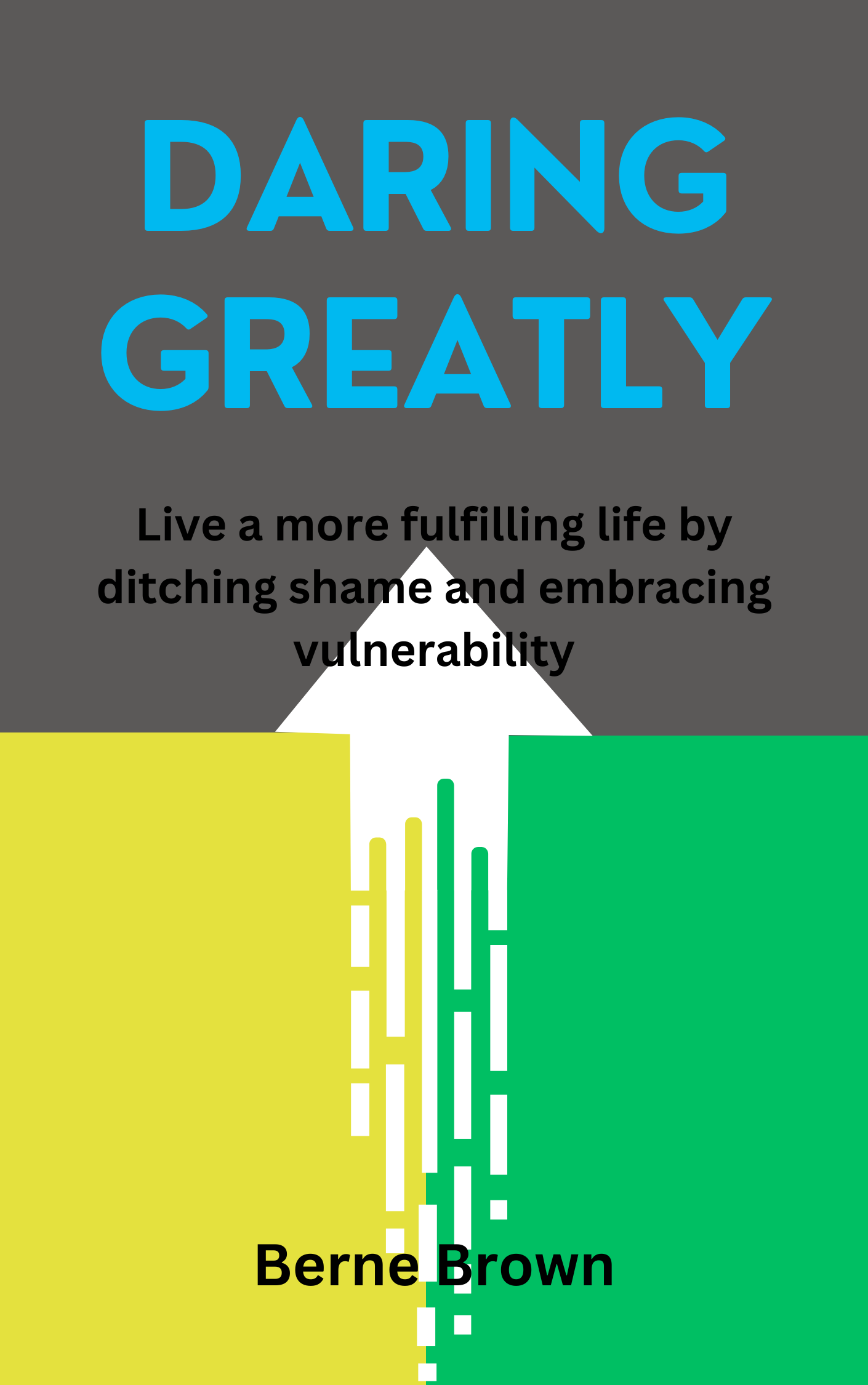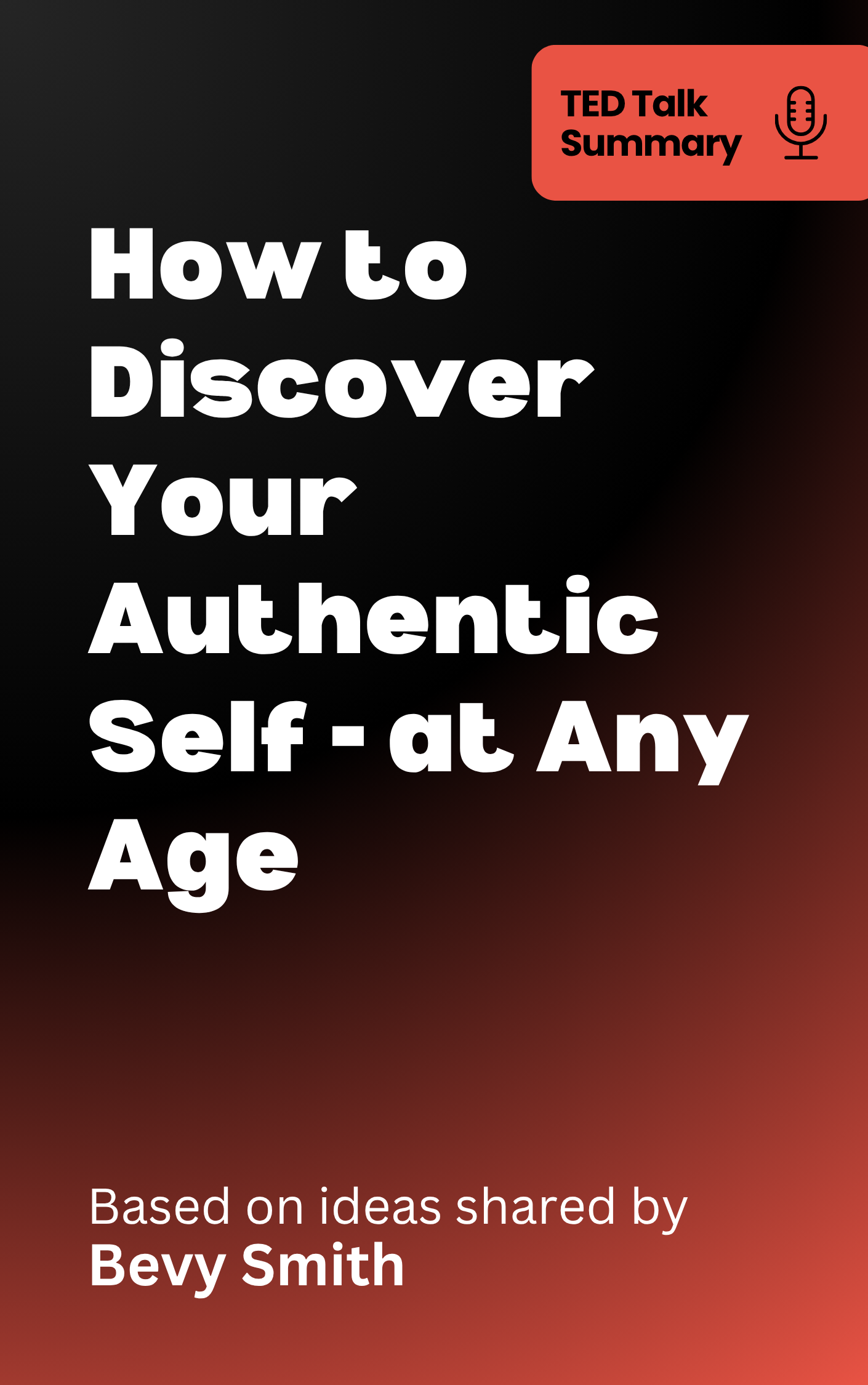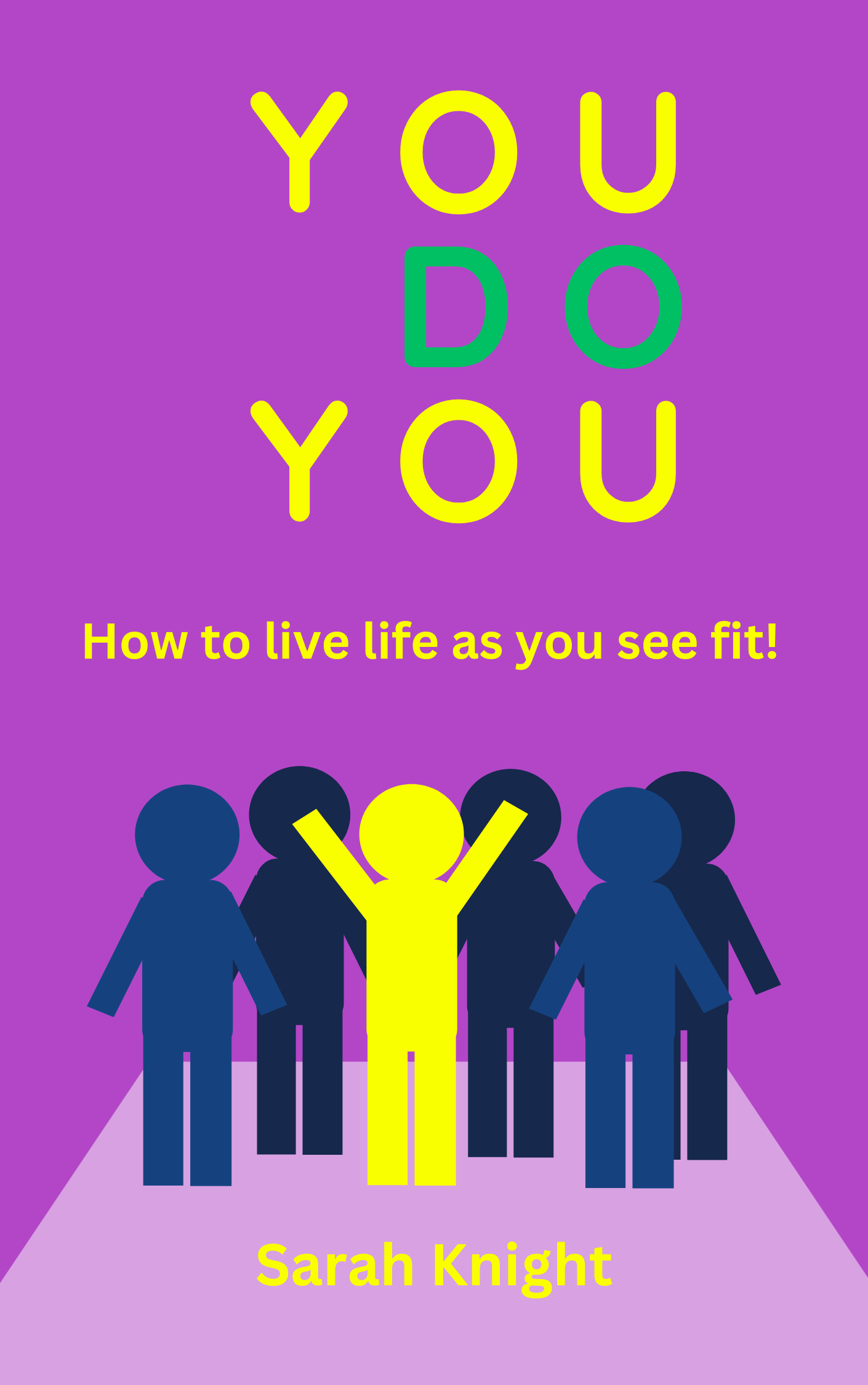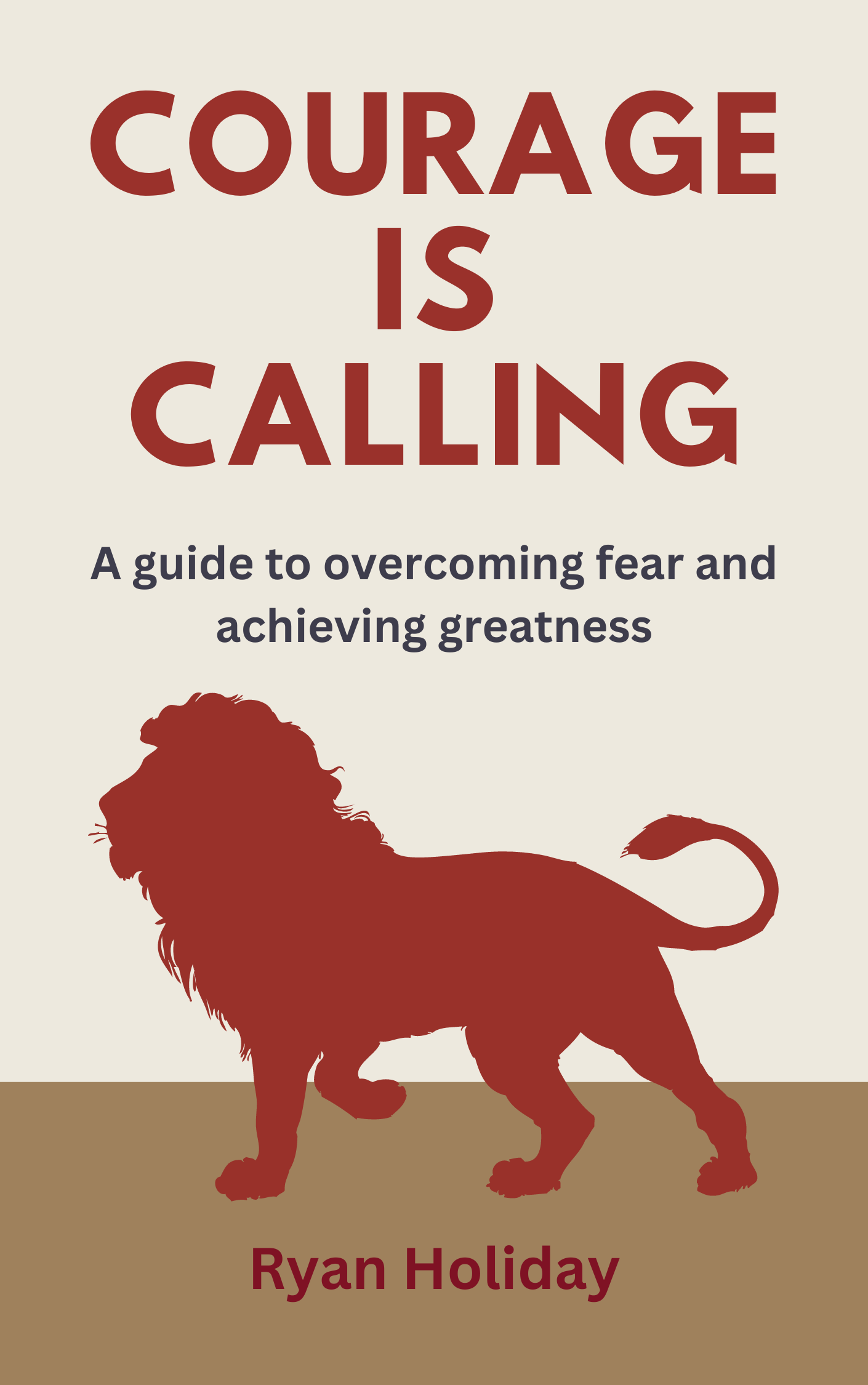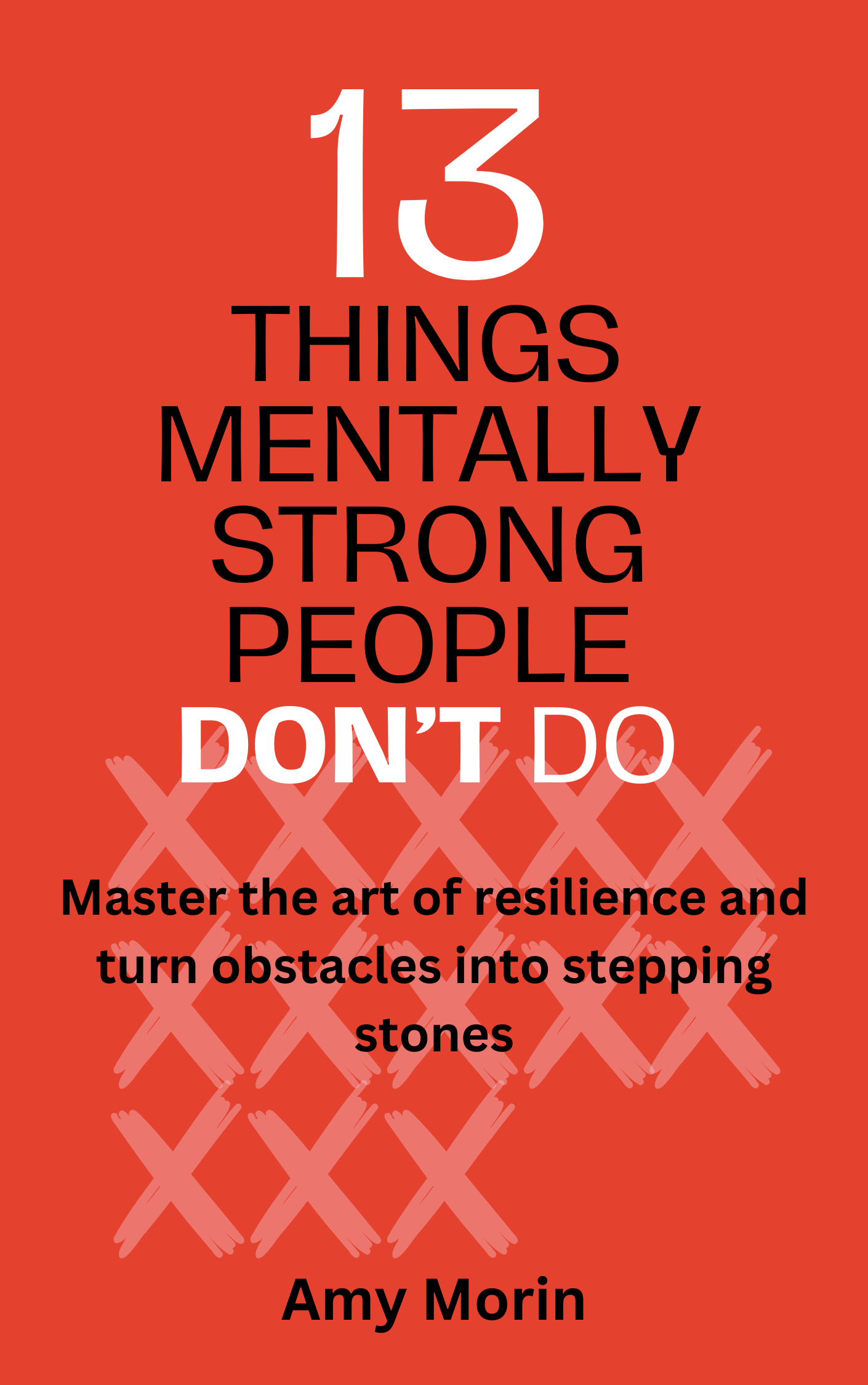Introduction
Do you remember that time you tripped spectacularly in front of everyone? The heat rising in your cheeks, the burning desire to just disappear? That feeling right there, is a universal emotion called SHAME.
This shame isn't just a fleeting blush. It's a cruel voice whispering continuously "you're not good enough," holding us back from love, connection, and living our full potential.
"Daring Greatly," a masterpiece by Brené Brown offers an antidote to this shame: VULNERABILITY. It's about embracing your imperfections and the courage to be seen authentically, even if it means occasionally tripping (figuratively or literally!). This, Brené argues, is the key to unlocking connection, creativity, and a more fulfilling life.
So, are you ready to silence the shame gremlin and step into your arena of vulnerability? Let's dare greatly together.
Understand the Origins of Shame
Have you ever avoided asking out your crush because of the fear of rejection? Did you then spend all night replaying the what-if scenes in your head? That’s what shame does! Now! Where does it come from?
Here's the thing: humans need connection. We're social butterflies, needing that sense of belonging as much as we need air. Like back in caveman times: Being banished from the tribe meant, well, not surviving very long. That need for connection is so strong, science even shows disconnection lights up our brain's pain center – ouch!
But sometimes fear holds us back from making that connection. We fear we're not enough – not worthy of love and connection. This "not being worthy of connection" feeling is what we call shame. And shame messes us up! To begin with, it holds us back.
For example, you have poured your heart into a painting only to be terrified of showing it because of a potential criticism. That’s how shame works! It makes us tie our self-worth to external validation. And ultimately kills our creativity. Which is the worst part!
Shame also discourages us from trying new things, expressing ourselves, or putting ourselves out there. It makes us live in a social bubble wrap – safe, but oh-so-lonely. On the flip side, feeling worthy fuels our courage to take risks, connect with others, and ultimately, live a more fulfilling life.
Researchers even found that shame weakens our belief in improvement and pushes us towards negativity. Yikes! While a little shame is normal, the way it is so ingrained in our society is a bit worrisome – borderline unhealthy!
So, what can we do? First step is to understand the cause of shame. Stay tuned to the next section!
The mindset of “never enough”
Fill in the blank: I want more _______! We’ll take a wild guess here and say your brain’s already screaming: more money, more time, more friends, more clothes…..just more, more, more! Why is that?
With all the craziness happening in the world – from pandemics to politics – it's no wonder our stress levels are through the roof. It's like we're all suffering from a collective case of post-traumatic stress disorder aka PTSD. Rather than overcoming the trauma by processing it – which requires vulnerability – we try to numb the fear by seeking MORE things, and to be more. As if accumulating things will shield us from the uncontrollable misfortunes of life.
Look closely and you’ll find this “more” problem is the basis of what is called the scarcity mindset or simply, never enough. We spend a crazy amount of time calculating how much we have, want, and don’t have, and how much everyone else has, needs, and wants - in short, we compare. And this comparison becomes the ultimate cause of shame. We put ourselves against airbrushed celebrities and meticulously crafted online personas, and feel crippling shame. Throw your scarcity mindset in, and it leads to TOTAL disengagement. We just withdraw! Convinced we can never measure up, NEVER. This vicious cycle of comparison, shame and disengagement goes on and on and on - hindering our ability to connect and thrive!
The end result of it all? We become isolated islands, afraid to show our true selves for fear of rejection. It's a gilded cage – beautiful on the outside, lonely on the inside.
Let’s find the “key” to opening this gilded cage in the next section.
Understand vulnerability
Mention vulnerability, and most people wouldn't exactly call it a superpower. We're conditioned to see it as a weakness, a path to failure. Success and strength seem to be the holy grail, leaving vulnerability out in the cold.
But what if we tell you that vulnerability isn't inherently bad? What if it's actually the key to experiencing life's full spectrum? Let's break it down.
First, being vulnerable isn't weakness – it's courage. After all, it takes guts to expose ourselves, to put our feelings out there. It's easier to stay safe and avoid potential failure but it’s no fun! Imagine Brené, our author, terrified of public speaking, yet choosing to share her research anyway. Vulnerability here isn't weakness, it's courage in action.
Second, vulnerability isn't good or bad – it just is. To feel is to be vulnerable. It's simply our capacity to feel emotions, both dark and light. We often associate it with sadness, fear, or grief, but vulnerability is also the foundation of love, joy, and empathy. After all, would you rather connect with a flawless robot or a real person who laughs a little too loud and sometimes trips over their own words? Vulnerability is the soil where love grows. It’s the bridge to genuine connection.
Third, in Brené’s words, “vulnerability is not knowing victory or defeat, it’s understanding the necessity of both; it’s engaging. It's being all in.” It's about showing up, even when you're terrified. It's about risking it all, without the guarantee of a win. It's about embracing the uncertainty and the possibility of failure.
So you see, vulnerability is all about embracing your imperfections, the wobbly bits and the quirky edges that make you “you.” It's about having the courage to be seen authentically, even if it means putting your unedited vacation pics complete with sunburn and goofy grins out there.
Now that we understand vulnerability isn't inherently negative, but rather a courageous act of authenticity, the question becomes: How do we cultivate this vulnerability in our daily lives? How can we harness its power to foster genuine connections and personal growth? The answer lies in learning to embrace vulnerability, not as a weakness to be overcome, but as a strength to be nurtured. Lets look at what benefits this’ll bring.
Embrace vulnerability
What good is a tightly closed bud – full of potential, but unable to bloom without some exposure? That’s how we humans are. Without embracing vulnerability, we would never reach our true potential. That’s a big statement, we know! Here’s our defense:
Think about the most meaningful relationships in your life. Chances are, they involve moments of opening up, sharing your true feelings, and experiencing empathy. Vulnerability allows us to connect with others on a deeper level. This fosters a sense of trust and understanding. Imagine yourself at a party, surrounded by a sea of unfamiliar faces. You could stick to the periphery, making polite small talk, but feeling hollowness inside. Or, you could take a chance, share a funny story about a recent travel mishap, and watch as others open up in return. That connection, that sense of belonging, wouldn't be possible without vulnerability.
And hey! Vulnerability doesn’t help personal development only. The same principle applies to professional development too. Yes, you heard that right! Vulnerability is required in school, office, and any other professional workspace. If you never take risks or expose your ideas to potential criticism, you limit your own growth. Stepping outside your comfort zone, even if it results in a setback, allows you to learn and improve. Think of "failing" as a springboard for discovering new approaches and refining your skills.
Here's a fascinating kicker for you: Research in health psychology reveals that the key to sticking to a healthy routine isn't necessarily about how actually vulnerable we are to a disease, but rather how aware we are of our personal risks. It's about facing our fears and understanding that we're susceptible. This self-awareness is a powerful tool in motivating us to adopt preventive measures and ultimately improve our health outcomes.
Remember: Vulnerability isn't something to fear; after all it's an intrinsic part of being human. And shame is just the reaction we use to try and shield ourselves from vulnerability. But all shame does is only isolate us from our tribe, our environment and most importantly our own selves.
It’s clear by now: Shame is bad. We need to get rid of it to truly embrace ourselves and develop courage to dare. The next section will show “How?”
Develop resilience towards shame to embrace vulnerability and yourself
Do you remember the bit about tripping spectacularly in public at the beginning of our journey? And that burning, all-consuming feeling making you want to disappear? That’s the thing about shame: it thrives in secrecy. It's the monster under the bed, growing bigger and scarier the longer we keep it hidden. We bottle it up, fearing judgment and ridicule, but this silence only amplifies its power. So, what do we do?
We share it! In fact, you might be surprised by the response. Empathy, not judgment, often awaits. People connect over shared vulnerabilities, and their understanding can replace shame with a sense of connection. Think about the time you confided in a friend about a mistake you made. Didn't their understanding lessen the burden? This is the power of vulnerability – it fosters connection and replaces isolation. So, talk about it with a trusted friend, a therapist, or even write it down. Verbalizing shame exposes it to the light, diminishing its grip. It's like letting out a trapped balloon; suddenly it doesn't seem so overwhelming.
And that’s the first step to embracing vulnerability: being resilient enough to share your shame. In Brené’s words, shame resilience is the ability to say, “This hurts. This is disappointing, maybe even devastating. But success and recognition and approval are not the values that drive me. My value is courage and I was just courageous. You can move on, shame.”
At the same time, building shame resilience isn't about becoming impervious to criticism. It's about developing self-compassion. We all make mistakes, and treating ourselves with kindness, rather than harsh self-criticism, is crucial. By acknowledging our vulnerabilities and practicing self-compassion, we become more resilient to shame. Shameful experiences, instead of crushing us, can become stepping stones to growth.
Remember the public trip? Shame-resilient you will not kill themselves over it. They might just laugh it off, share the story with humor, and move on. Shame no longer dictates your response; you've taken back the control.
Another important aspect to embrace vulnerability is to be our authentic self. More on it in the next section.
Shed your masks and be yourself to lead a fulfilling life
Vulnerability – the raw, exposed part of ourselves – often feels like kryptonite. Naturally, it feels easier to just hide it and armor up with carefully constructed facades: perfectionism, cynicism, even numbing ourselves with distractions. Say, while planning a dream vacation, instead of letting yourself savor the excitement, you start worrying about canceled flights or bad weather. This "foreboding joy" is a way to preemptively shield yourself from disappointment, but it also robs you of the present moment. Similarly, perfectionism promises a shield against failure. But the constant pressure to be flawless leaves no room for growth or learning. We become afraid to take risks or put ourselves out there. This makes us lead a life of unfulfilled potential.
These facades have to go now!
The truth is, vulnerability can't be eradicated – it's woven into the fabric of being human. But by accepting our imperfections and "enoughness" as we are, we start to dismantle these self-protective masks. Let's revisit the vacation example. By accepting that things might not go perfectly, you can truly embrace the joy of anticipation. You're prepared for bumps in the road, but not consumed by them.
The same goes for perfectionism. By letting go of the need to be flawless, we open ourselves up to the possibility of failure, yes, but also to learning and growth.
We don’t endorse blind optimism. We endorse recognizing vulnerability as a source of strength, not weakness. It's about shedding the masks that hold us back and stepping into a life of authenticity and connection that will ultimately give us courage to dare.
Now! To truly live a fulfilling and daring life, it is important to embrace vulnerability at school and at the workplace too - basically everywhere!
Embrace vulnerability everywhere by moving beyond the shame game
For decades, we've been sold lies: that success is synonymous with perfection and invulnerability. This outdated playbook has shaped countless classrooms and workplaces into arenas of fear and competition. Picture this: people in leadership roles bullying others, criticizing subordinates in front of colleagues, delivering public reprimands, or setting up reward systems that intentionally belittle, shame, or humiliate people. These tactics, while seemingly effective in the short term, sow the seeds of long-term damage.
Shame, as we've discussed, is a powerful inhibitor. It stifles creativity, fosters fear, and hinders growth. In environments dominated by shame, individuals retreat into their cocoons, becoming hesitant to take risks, offer new ideas, seek help and fly high. This suffocates innovation and collaboration - the essential components of progress.
To truly thrive, we must shift from a culture of shame to one of vulnerability. Imagine a classroom where mistakes are seen as opportunities to learn, and questions are met with curiosity, not criticism. Or a workplace that celebrates failures as stepping stones to success. In these spaces, people feel safe to be themselves, to experiment, and to grow. This is where true innovation and creativity flourish.
It’s time to rewrite the rules. Let's create environments where vulnerability is the hero, not villain. By fostering a culture of trust and respect, we unlock the full potential of individuals and teams.
The question now is, who will lead this change?
Reshape Organizational Culture to Foster Vulnerability
We already know that a workplace where failure is met with public ridicule, or a classroom where wrong answers bring punishment are all too common symptoms of a "shame culture" that stifles growth and connection. But it can be turned around. How?
Leaders, from CEOs to teachers to parents, have the power to break this cycle of shame and disengagement; and cultivate a culture of vulnerability. Here's how:
People in influential positions often feel pressure to project an image of unwavering competence. But what if vulnerability was the true power move? When leaders openly share their struggles, they create a ripple effect of trust and authenticity. Imagine a CEO admitting a past business mistake and the valuable lessons learned. This humanizes them, inspires the employees to embrace vulnerability and share their own ideas, fostering innovation and collaboration.
Shame thrives on secrecy, right? So, publicly celebrate "epic fails" as learning opportunities. This reframes failure as a stepping stone on the path to success, encouraging risk-taking and experimentation. Think of a classroom where teachers openly discuss past teaching blunders and how they improved. This normalizes mistakes, allowing students to experiment without fear of ridicule, fostering a love of learning.
When leaders embrace vulnerability, it ripples outwards, transforming workplaces, schools, and families into spaces of connection, growth, and ultimately, success.
But you know, learning begins at home. So, should the change. Before transforming schools and workplaces, normalizing vulnerability should begin at home. Learn more about it in the final section.
Embracing vulnerability at home
Parenting is perhaps the ultimate test of vulnerability. We're responsible for these tiny humans, expected to have all the answers, and terrified of messing up. Plus, perfect parenting doesn't exist. So, how do we equip our little ones to not just survive, but thrive in this crazy, beautiful mess? By ditching the parenting manual and diving into the real deal: raising brave hearts.
We’ve all got those childhood scars – those moments when we felt so ashamed we wanted to disappear. Imagine how much bigger those shadows loom for our kids. We can’t shield them from life’s punches, but we can equip them with the armor of resilience.
So, embracing vulnerability at home is about creating a home where it's okay to be imperfect. A place where laughter drowns out mistakes, and hugs outweigh judgment. A castle of love, where our kids know they're valued, just as they are. For instance, instead of dismissing a child's fear of the dark as silly, validate their feelings by saying, "It's okay to feel scared sometimes. We all do." This simple act can help them understand that their emotions are valid and it's okay to seek comfort.
Similarly, let's celebrate their small wins! Acknowledging and praising a child's efforts, even in tiny tasks like tidying up their room or trying a new food, boosts their self-esteem. It shows them that progress, not perfection, is what truly matters.
And remember, you're your child's first role model. Teach them how to dodge life’s obstacles, not by avoiding them, but by facing them head-on with courage. We know that actions speak louder than words. So, show them you’re not afraid to be vulnerable too. Sharing your own challenges and how you overcame them can teach them resilience. For example, if you're nervous about a big presentation, talk to your child about it, explaining how you're preparing and how you'll manage your anxiety. This demonstrates that it's okay to feel overwhelmed, but with the right strategies, you can overcome challenges.
Let's raise a generation of kids who aren't afraid to shine. Let’s build homes where vulnerability is a badge of honor, not a weakness. Because when our kids step out into the world, armed with courage and authenticity, they’ll be unstoppable and daring!
Chapter 12
Details coming soon.

